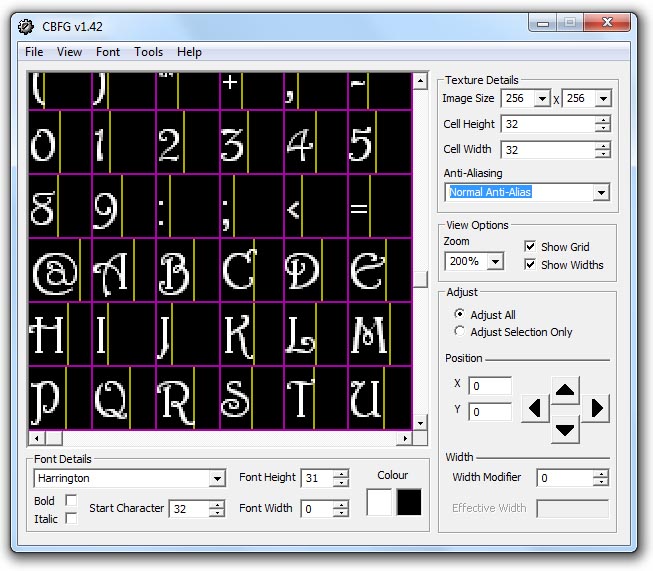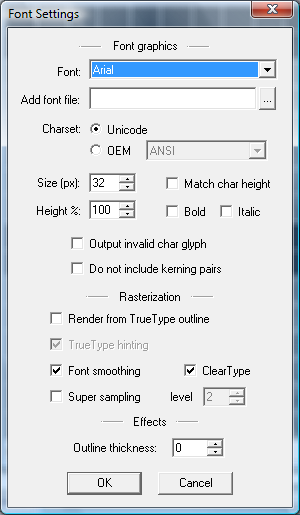
#Windows bitmap font windows#
(There are Windows API calls that will help us determining how wide they actually are.) As you can see, the sample font is not fixed but variable pitch, which means that the characters are not equally wide. An important task when writing such an engine will be to identify these positions. To bring the words “Hello, world!” (or any other words, of course) to the screen, a font engine would have to blit the letters sequentially from their positions in the bitmap. (Although you might create bitmaps from the vector font first and simply blit these afterwards.) In fact, bitmap fonts are very simple.


That’s faster than vector fonts (TrueType fonts fit into this category as well), because they require that you plot lines or bézier curves whenever you wish to display text. I’d suggest we dive right in! (I can’t think of any good introduction anyway…) How does it work?īitmap fonts store the characters as bitmaps which are blitted to the screen side by side to form words. To have something to render from the start, we’ll also write a program to create sample fonts from existing TrueType fonts. In this tutorial, we’ll write a fast bitmap font engine for DirectDraw. The font definitely takes some training and getting used to (especially recognition of characters that use descenders) but I found it to be quite readable after a while.This article was originally published at Gary Simmons’ Mr GameMaker. >I created a font within a 3x5 pixel dimension, allowing the display of 32 lines of 70 characters each.
#Windows bitmap font full#
In order to come close to showing an 80-column display, I created a truly tiny font, displaying the full ASCII character set (upper and lower case). I used the hi-res display (280 x 192 pixels!) to display my own character set. At the time, the Apple II could only display upper case characters. >In 1981 I wrote a terminal emulator for the Apple II. >Created for the Apple II program The Terminal.

Who can possibly forget the font that Mike Koss's "The Terminal" Apple ][ terminal emulator used to get 32 lines of 70 characters each in HIRES graphics mode in 1981? It's the most difficult to read font I've ever used regularly! (Don't try using it on a color TV, though.) >DonHopkins on | parent | favorite | on: Sans Forgetica, a font designed to help you rememb. It should include the 3x5 pixel font from Mike Koss's "The Terminal" on the Apple ][. One of them led me to, which has a few emulators for (AFAIK) obscure systems such as “Thomson MO5NR, Thomson MO6 & Olivetti Prodest PC128” and, which, presumably, is the ROM for this system. Can that be done in less memory than a generic blitter would use?
#Windows bitmap font tv#
So, in real life, those characters were filtered through a NTSC tv signal.Īlso, the last comment on claims “It had no character generator, formin it's large letters from graphic routines.” That seems to imply all characters were drawn procedurally, not from a bitmap font. says “The Interact shipped with 2 joysticks, a built-in tape recorder, a TV RF modulator and 2 KB of ROM”.


 0 kommentar(er)
0 kommentar(er)
